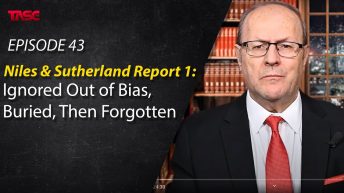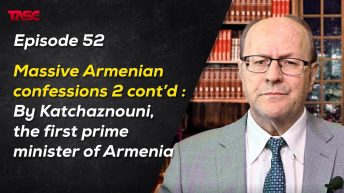Wegner, born in 1886 in Elberfeld, Germany, pursued study in Zürich, Breslau, and Berlin. Upon completing his doctoral studies in law, he joined the German armed forces. After a brief tour in Poland, he rose to the rank of second lieutenant in the German Sanitary Corps, which was attached to the Ottoman Sixth Army. He was stationed along the Baghdad Railway in Syria and Mesopotamia in the Ottoman Empire during World War I as a German soldier and medic.
The photographs he took there were much misinterpreted, misrepresented, abused, and hijacked by the Armenian propagandists who use them as the core of witness images of the Turkish-Armenian conflict 1915 events. He took hundreds of photographs in the Armenian resettlement camps in Deir ez-Zor, which show that Armenian relocatees arrived at their destinations alive and lived in reasonably organized camps, wartime conditions considered. There are no Wegner-photographs that allegedly prove genocide that can withstand the scrutiny at a competent courtroom. None of the photos can serve as evidence of thealleged Armenian genocide.
They mostly show camps, people standing and staring at camera, walking, carrying children or packs, in short, general scenes of a relocation. Muslims, mostly Turks, suffered through similar relocations and have more tragic photos showing people walking barefoot in the snow and slush of the Balkans, the Caucasus, and Eastern Anatolia winters. But those photos are ignored out of sheer bias and bigotry of orientalist scholars. It is said that when Wegner’s protest letter, published in a German newspaper, was shown to President Woodrow Wilson at Paris Peace Conference in 1919, Wilson made a case for the creation of an independent Armenian state. If true, then there are several serious character deficiencies here: 1) When betraying Armenians were being relocated in 1915 from Eastern Anatolia to Northern Syria, these Muslims were being driven from their homes in the Caucasus to Eastern Anatolia.
Did Wegner take their photos? Did he at least mention Muslim suffering with a single line in that letter? If not, why not? 2) If Wilson was moved by the Wegner-letter to create an independent Armenia, then how can he morally reconcile his behavior with the fact that Armenians would constitute a minority in those lands? That would be the first apartheid of the 20th Century where a tiny Christian minority would rule over an overwhelming Muslim majority. Is Wilson comfortable with such an Apartheid idea? Whatever happened to the self-determination rights and the equality principle? Is that principle dismissed if the practicing parties are Turks? Isn’t that bias, bigotry, hypocrisyand orientalism at its worst?
In 1921, Wegner testified at the Kangaroo court of Soghomon Tehlirian, the Armenian terrorist who had assassinated Talat Pasha at point blank range in broad daylight in Berlin. On one hand, Wegner is this passivist who writes letters protesting violence and takes photos of atrocities, while on the other Wegner sees nothing wrong with testifying in defense of a blood-thirsty Armenian terrorist. Although Tehlirian killed the former Talat Pasha in front of several eyewitnesses, he was found not guilty on the grounds of temporary insanity. Prosecutor was not given a proper chance and resources to cross examine, produce witnesses, and build a strong case. Thus, Wegner’s testimony helped excuse an Armenian terrorist for his hate crime.
This is why there is blood on Wegner’s hands. Wegner became an accomplice to a cold-blooded murder. When the European Court of Human Rights heard the Turkish narrative in 2015, supported by formidable documentation, the judges ruled that Armenian genocide was an opinion, not a court-proven fact, as such rejecting an opinion is an exercise of free speech. They added that Armenian genocide could not be compared the Jewish Holocaust as the latter had a verdict by a competent court, Nuremberg, supporting it. By championing the plight of Armenians but ignoring the plight of Muslims, Wegner has shown the selective morality of an orientalist.
The originals of Wegner-photos are housed in Stutgart’s Schiller-Nationalmuseum and ATAA, the Turkish-American umbrella organization established in 1979, contacted the museum director regarding the Wegner photos. They replied saying there were no indications regarding when or in what country the Wegner photographs were taken, so the dating, and sites depicted must be determined by whoever uses the photos.’’ This response unfortunately opens the door to Armenian propagandists who take liberty with the interpretation of Wegner’s photos.




Add comment